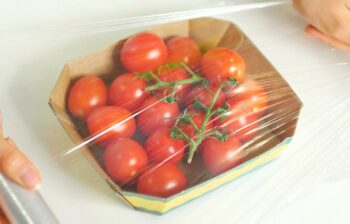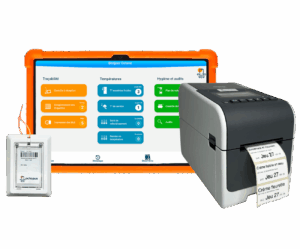Labels: Stay compliant with the HACCP method
The HACCP method requires you to guarantee the traceability of your products. That means being able to retrieve the information on the label of a product used in production or put up for sale.
Would you like to learn more on the subject? Check out our article to better understand the HACCP method.
The simplest way is to keep the information on your product labels. This is internal traceability.
The useful information to keep on your product labels for the HACCP method includes:
- the product name, to be able to identify it
- its batch number
- its expiration date
- optionally its health stamp
You are not required to keep the paper label of the product
The only obligation concerns keeping the information from the traceability label.
If you do not want to cut out your labels, wash, dry, sort, and store them, you can take photos using the Octopus HACCP app.
This method complies with HACCP regulations and allows you to save, organize, and archive the important information from your HACCP labels in one click.
For more clarity, download the free HACCP guide on traceability.
What should be indicated on HACCP labels?
Once a product is opened, unpackaged, or processed, if it is not consumed immediately, you must attach a label to it.
For opened or unpackaged products, you must note on your HACCP label at least the opening or unpackaging date and the use-by date, while being able to identify the product by its exact name or category. For example: cooked vegetables or sliced deli meats.
In the absence of microbiological analyses, the maximum storage duration for a product is 3 days.
Some products have even shorter shelf lives: for example, products containing raw eggs must be consumed the same day, as well as raw minced meats. There is no regulation specifying the maximum storage duration for each type of product, but good hygiene practices exist.
To learn more, you can refer to the hygiene good practice guide for your sector and consult our dedicated article on use-by and best-before dates.
Why note the opening date and expiration date on the product label?
According to the HACCP method, it is important to note the opening date to help you monitor the freshness of your products. Be aware that during a hygiene inspection, a product without a label in a cold storage area will likely be subject to a sanction.
Indeed, without the opening, unpackaging, or preparation date indicated on the product, how can you know how long it has been there and whether it is still safe to consume?
The regulatory limit, in the absence of microbiological analyses, is 3 days of storage.
In kitchens, it is common to see products wrapped with a date written in marker.
Hygiene inspectors are not very fond of this practice because:
- Is it the opening date or the expiration date?
- If it is the opening date, do your teams know the maximum use-by date of the product?
- 3 days pass quickly… It is therefore better to clearly note the expiration date on the product and avoid any confusion.
What solutions exist for creating HACCP labels?
You can fill out HACCP labels by hand, which is time-consuming and sometimes illegible, or use a label printer.
There are two types of HACCP date and label printers:
- Date printers that print labels with only a date. They do not allow indicating both the opening date and the expiration date; the labels will show either one date or the other.
- Specialized HACCP label printers that allow you to indicate the product name, opening date, and expiration date. These printers provide complete HACCP information on your label.
Print labels directly from your mobile
The Octopus HACCP app allows you to print labels directly from your mobile, as well as quickly take inventory of your goods with short expiration dates.
What makes Octopus special? To avoid misunderstandings about dates, we offer a solution to indicate to your teams the correct secondary expiration date in effect in your establishment.
And Octopus HACCP labels do not leave marks when peeled off your containers! Their ink does not smudge or run, even when the label is wet or in very cold or hot environments.



